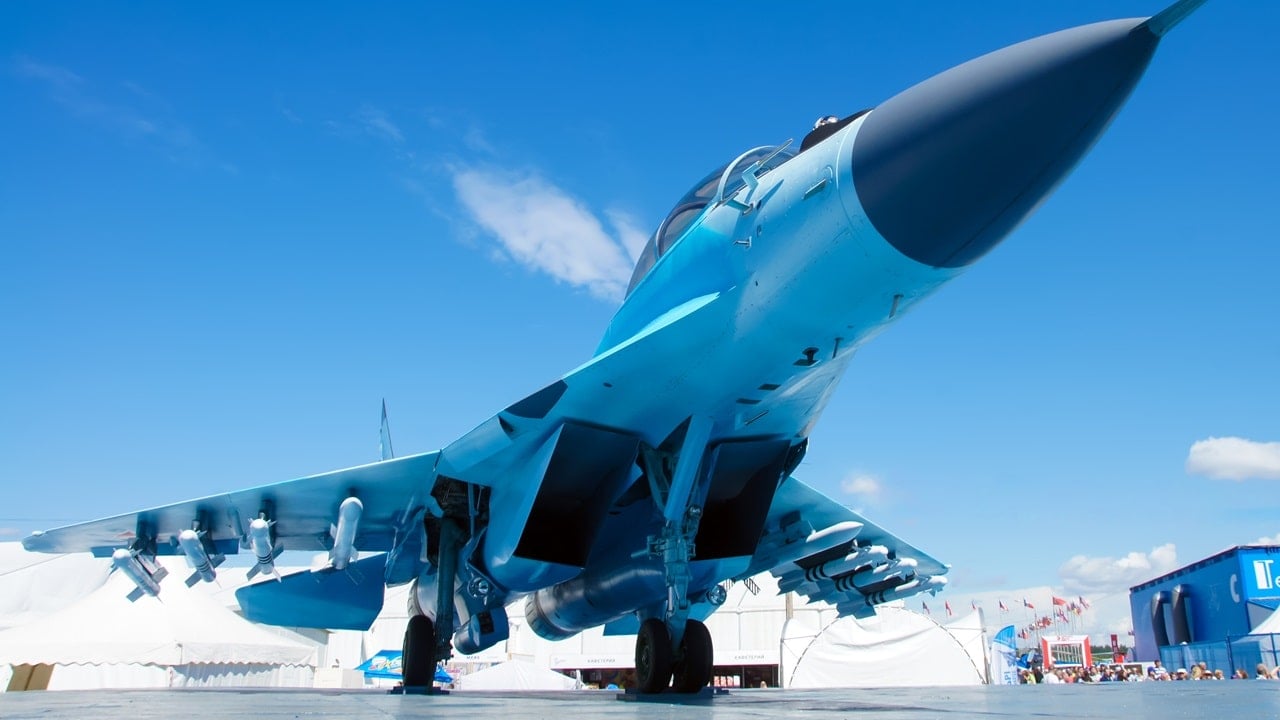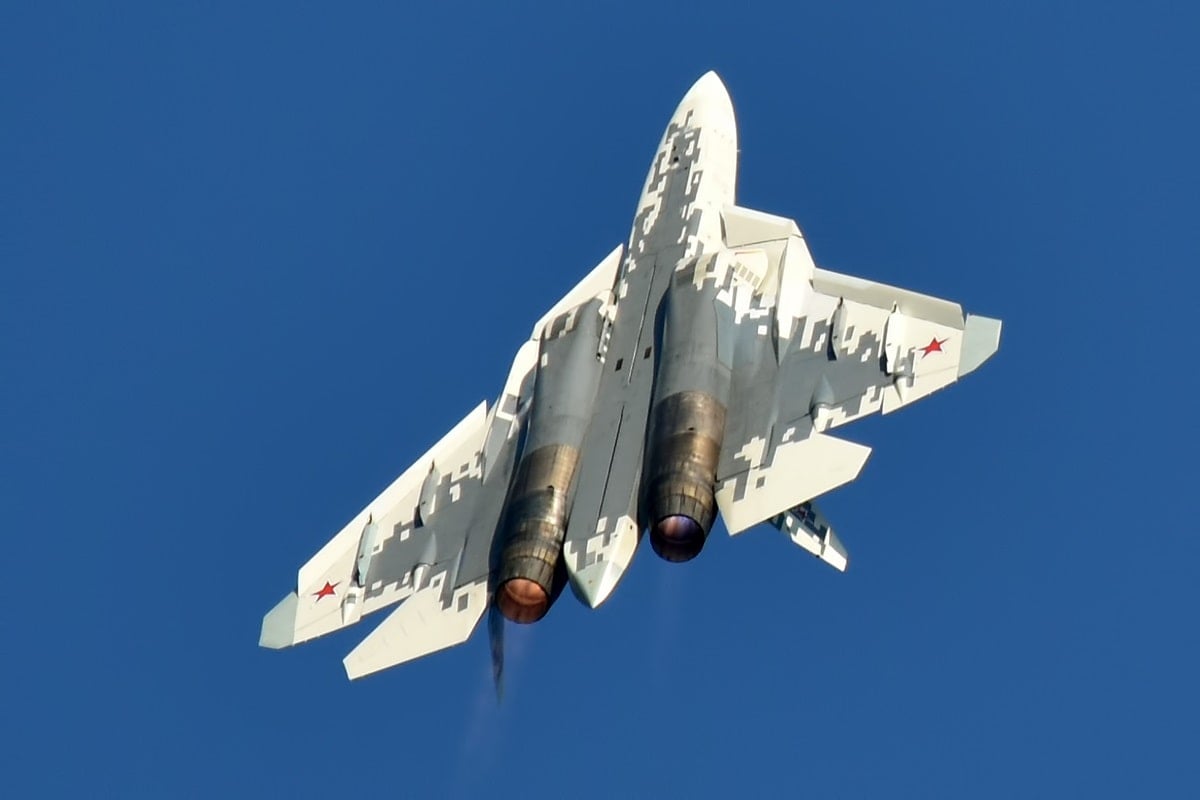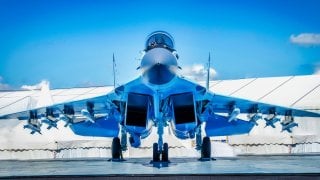Russia's Su-57, Su-75 and MiG-35 Fighters All Have the Same Problem
Russia is finding success in its war with Ukraine by relying on mass-produced, older Soviet-era weaponry rather than more sophisticated, expensive systems like the MiG-35, Su-57, and Su-75, which it struggles to produce in significant numbers.
Summary: Russia is finding success in its war with Ukraine by relying on mass-produced, older Soviet-era weaponry rather than more sophisticated, expensive systems like the MiG-35, Su-57, and Su-75, which it struggles to produce in significant numbers.

Key Points on Why Russia Has Su-57, Su-75 and MiG-35 Problems
While advanced warplanes offer tactical advantages, their limited production undermines their effectiveness in prolonged conflicts.
Russia’s reliance on readily available, cost-effective systems, including older tanks and drones, has proven more practical.
This shift underscores the evolving nature of modern warfare, where simpler, robust equipment often outperforms high-tech, costly alternatives.
Russia Won’t Be Able to Build Enough MiG-35, Su-57, or Su-75s & It Shouldn’t Try: Russia finds itself in an odd position. On the one hand, it is winning its illegal war with Ukraine. Despite rhetoric in the West, Russia has weathered the worst parts of the Western economic sanctions on their defense industrial base and wider economy, too.
Russian factories are churning out Soviet-era T-72 tanks and T-90Ms like sausages. Older Soviet-era warplanes are also being pushed out quickly.
Yet when it comes to more sophisticated designs, such as fielding advanced warplanes with newer features, the Russians keep struggling.
Not only is Russia struggling to produce these systems in general, but Moscow’s defense contractors are unable to produce them in numbers that would make them effective in combat. Sure, platforms like the Su-35 are dangerous warbirds for anyone who goes up against them. But Moscow cannot produce these systems in abundance, making their efficacy in combat limited. The same is true for the MiG-35, the Su-57, and the Su-75.
All these systems were hailed as game-changing platforms that would ensure Russia’s victory over Ukraine in the air.
That’s because in a war of attrition, where cheap, mass-produced weapons systems are preferred over the costlier and complex ones, the Russians will never be able to build enough of those advanced warplanes to make a huge difference in Ukraine.

What’s more, because Russia’s supplies and funds are limited, the notion that they could mass-produce large quantities of both older systems as well as newer, more sophisticated platforms is ridiculous.
In fact, the Russians probably have all the advanced systems they need for the war.
Right now, the Ukrainians are buckling after years of being bled out by the Russians. Moscow needs cheap, easy-to-replace systems to finish their mission. The one thing that the Ukrainians seem to have a decisive edge in is the innovative drones they have been deploying with great effect against Russia.
Moscow should be focusing on developing countermeasures to those systems, rather than trying to replicate the Americans in building a wünderwaffe that will never fly – and even if it does fly, will not be anywhere near as effective as less advanced systems will be.
The world is entering a truly bizarre moment in warfare, when the old assumption that newer, more complex systems are always preferable to older ones is going out the window. Modern combat is marked by the presence of what Israel refers to as “gray zone” operations, by the proliferation of technologies like drones, and by other unconventional methods. It has been flattened. It is no longer necessarily the case that the most expensive military with the coolest gadgets and best training will crush its opponents, as it was, for example, during Operation Desert Storm.

Today, conflict is a strange hodgepodge of a few sophisticated, unmanned systems augmenting older technology and smaller forces. The drones Ukraine has employed over the course of the war have been a key factor in their withstanding Russia’s onslaught. Meanwhile, older Soviet-era systems, combined with Iran-built drones, have been essential for Russia in the war.
So the notion that modern armies need fifth- and sixth-generation warplanes at the ready, for example, when the shooting starts is fanciful. Yes, they can help at times. But what we’ve seen not only in the Ukraine War, but also in U.S. wars in the Mideast, is that pricey platforms have decreasing strategic returns.
Firepower and the ability to take a punch are key.
What’s more, the ability to simply be present with readily available, reliable systems – even if they’re older platforms – has proven to be more important than fielding a wonder weapon.
Not only can Russia not produce enough advanced warplanes, but they shouldn’t even try. They’re doing fine with what they’ve got. The Americans and other potential combatants should learn from the Russian example: Being ugly and slow is often better than being stylish and fast in modern warfare.
The new face of war is a strange amalgamation of much of the old and some unconventional elements of the new. No nation should be wasting its time trying to build Starfleet, as cool as it would be. Stick to the fundamentals instead.
About the Author
Brandon J. Weichert, a National Interest national security analyst, is a former Congressional staffer and geopolitical analyst who is a contributor at The Washington Times, the Asia Times, and The-Pipeline. He is the author of Winning Space: How America Remains a Superpower, Biohacked: China’s Race to Control Life, and The Shadow War: Iran’s Quest for Supremacy. His next book, A Disaster of Our Own Making: How the West Lost Ukraine, is due October 22 from Encounter Books. Weichert can be followed via Twitter @WeTheBrandon.
All images are from Shutterstock.


